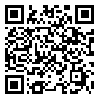BibTeX | RIS | EndNote | Medlars | ProCite | Reference Manager | RefWorks
Send citation to:
URL: http://mjiri.iums.ac.ir/article-1-3730-en.html
Background: Considering the overall tendency in psychology, researchers in the field of work and organizational psychology have
become progressively interested in employees’ effective and optimistic experiments at work such as work engagement. This study was
conducted to investigate 2 main purposes: assessing the psychometric properties of the Utrecht Work Engagement Scale, and finding
any association between work engagement and burnout in nurses.
Methods: The present methodological study was conducted in 2015 and included 248 females and 34 males with 6 months to 30
years of job experience. After the translation process, face and content validity were calculated by qualitative and quantitative methods.
Moreover, content validation ratio, scale-level content validity index and item-level content validity index were measured for this
scale. Construct validity was determined by factor analysis. Moreover, internal consistency and stability reliability were assessed. Factor
analysis, test-retest, Cronbach’s alpha, and association analysis were used as statistical methods.
Results: Face and content validity were acceptable. Exploratory factor analysis suggested a new 3- factor model. In this new model,
some items from the construct model of the original version were dislocated with the same 17 items. The new model was confirmed by
divergent Copenhagen Burnout Inventory as the Persian version of UWES. Internal consistency reliability for the total scale and the
subscales was 0.76 to 0.89. Results from Pearson correlation test indicated a high degree of test-retest reliability (r = 0. 89). ICC was
also 0.91. Engagement was negatively related to burnout and overtime per month, whereas it was positively related with age and job
experiment.
Conclusion: The Persian 3– factor model of Utrecht Work Engagement Scale is a valid and reliable instrument to measure work
engagement in Iranian nurses as well as in other medical professionals.
| Rights and permissions | |
 |
This work is licensed under a Creative Commons Attribution-NonCommercial 4.0 International License. |







